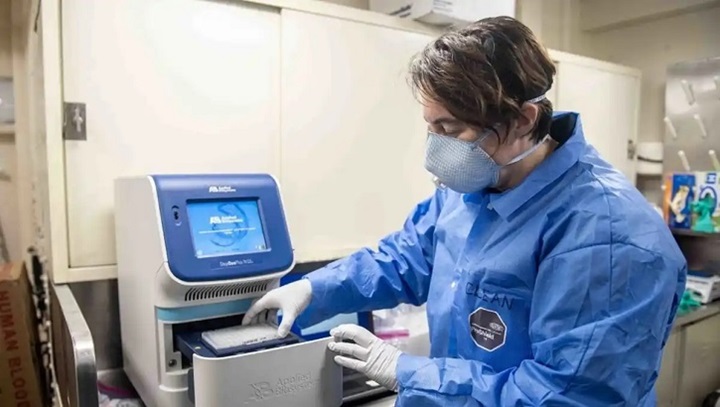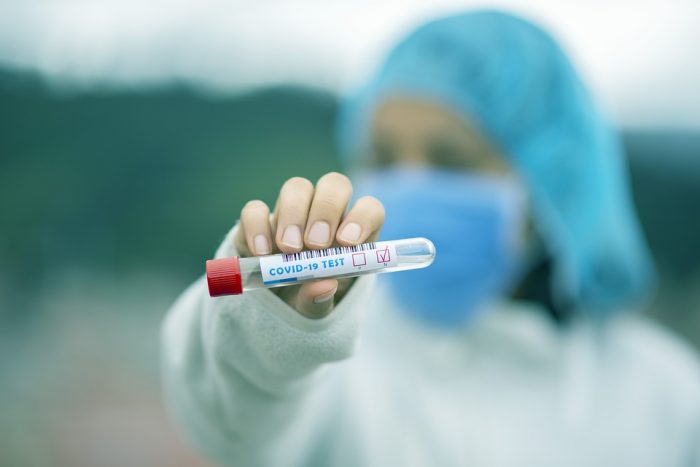The increasing cases in India necessitated an ‘invention of its time’
Hyderabad: Out of a few methods to reduce the spread of the novel Corona virus, increased tracing, testing and isolation of the people stands as the primary one. Currently the most efficient testing protocol uses RT-PCR (Reverse Transcription-Polymerase Chain Reaction) Test. However, this protocol test takes time and is expensive.
But then, the uprising number of cases made the research team from the Centre for Cellular and Molecular Biology (CCMB), Hyderabad, think of developing a fast, cheaper protocol for Covid-19 tests. They, according to the reports, are now successful in modifying the RT-PCR tests to obtain a reliable, fast and not so expensive procedure to test the samples. What the team did was using the RT-PCR but with dry swabs, bypassing the RNA isolation stage, which they find consumes less time and is less expensive. They also suggest a variant method which apparently shows a higher efficiency that the conventional one. The results have been posted in bioRxiv and medRxiv pre-print servers. Pre-prints are yet to be peer-reviewed and published in scientific journals.

Procedure for usual RT-PCR Test:
In the usual method of testing, nasal swabs collected from a person are placed in a Viral Transport Medium (VTM). From this, a part of the liquid is taken, the viral RNA is extracted and RT-PCR test is carried out. The remainder is stored. It is the step of isolating the RNA that takes time and is expensive.
What CCMB team’s proposal is:
Instead of placing the nasal swabs in the VTM, they are put in a Tris-EDTA (TE) buffer solution, protected by ice. “Virus in dry swabs can stay for several days at 4 degree, that is, ice temperature. For longer storage, it can be kept in minus 80 degrees. The dry swab is much more suitable than VTM, and testing can be delayed, if necessary,” says Rakesh Mishra from CCMB, and one of the authors of the pre-print. He adds that handling and transporting dry swabs is safer and more convenient.
A small part of the dry swab-TE extract was taken in a new vial and heated to 98 degree Celsius. This destroyed the protective wall of the virus particles, releasing its RNA and this was sent for the RT-PCR test. In all, 40 patients were put through both testing protocols (heated TE without RNA extraction and current standard method). While 22 tested positive and 18 negative in the new method, the standard method yielded 23 positives and 17 negatives. The researchers found that the new protocol of using dry swab-TE extract for RT-PCR was at par with the standard method.
However, the standard method is known to have a problem of false negatives. To address this, the researchers took the dry swabs-TE extract, extracted RNA from it and studied the samples. In this variant method, they found that a few samples that were consistently negative in both methods now showed a positive result. So out of 40 samples they now had 28 positives and 12 negatives. The researchers arrived at the same results after multiple experiments. They believe this was because of low viral load which was picked up during the new variant procedure. Further study is needed to see if the samples collected and stored in TE can be used for culturing of the virus for any future studies and full sequencing of the viral genomes.




![The Top & Most Popular Seafood Bucket Restaurants in Dubai for you [Never Miss]](https://uae24x7.com/wp-content/uploads/2020/09/8-seafood-in-a-bucket-scaled-e1600739237403.jpg)
![Procedures for Renewing the Driving License in Abu Dhabi [3 Simple Steps]](https://uae24x7.com/wp-content/uploads/2020/07/Capture-9-e1595666454466.jpg)





